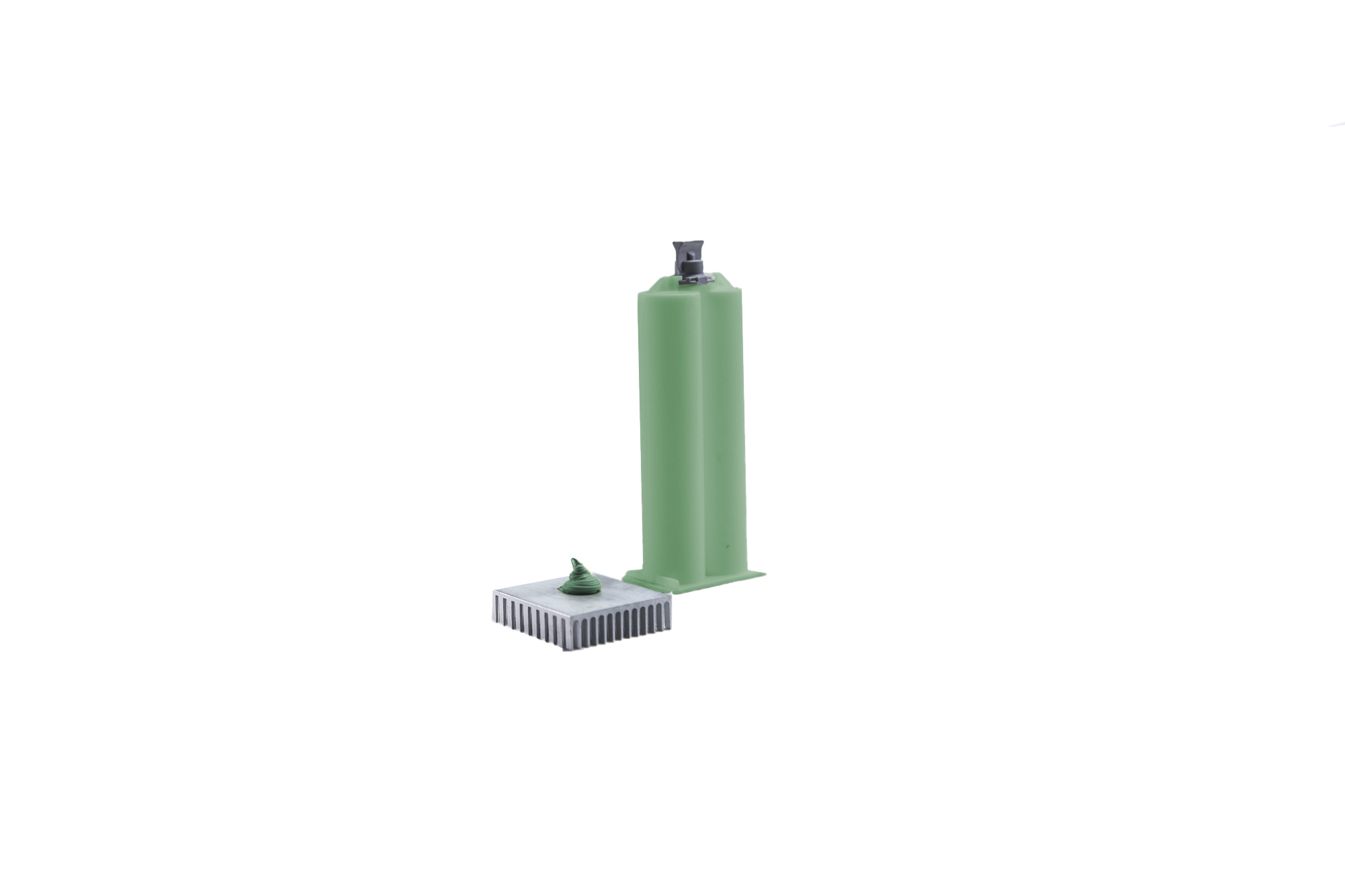HT 4500 | One part Hybrid Thermal Gel
- Green
- 4.5 Thermal Conductivity
- Printable
Product Description
Honeywell HT4500 is a pre cured dispensable/printable gap filler which is silicone-based and filled with advanced ceramic fillers. It is formulated to deliver high dispense rate for improved productivity, good gap filling ability under low pressure and low contamination to devices. The viscosity is modified and developed specifically to allow it to be integrated into printing processes. The material is designed to minimise thermal resistance at interfaces and maintain excellent performance through reliability testing.
Honeywell HT4500 is designed for those that prefer the reliability of a gel material for their printing processes. The low viscosity that enables printing removes the need for expensive dispensing equipment and makes for a good alternative for thermal greases that often exhibit pump out or dry out issues. As an additional bonus, HT4500 has been extensively tested and passed the rigorous vibration tests that are required by the automotive industry. HT4500 has excellent thermal stability after different long term reliability tests including, D85( 85 ̊C&85%RH) 1000hrs, Thermal Shock 1000cycles and HTB(High Temperature Baking)150 ̊C 1000hrs.
Honeywell HT4500 is a soft, printable gel that can be applied like grease using screen printing. There is almost no stress when being compressed and compression-deflection is difficult to measure. Slumping is a concern when bondline thickness is high; especially if the boards are vertically mounted. For HT4500, we recommend less than 1mm( in vertical position) to prevent slumping but thickness is not a concern at all when boards are horizontally mounted.
Technical Specifications
| General Properties | |||||
| Color Color The color | Green | ||||
| Specific Gravity Specific Gravity Specific gravity (SG) is the ratio of the density of a substance to the density of a reference substance; equivalently, it is the ratio of the mass of a substance to the mass of a reference substance for the same given volume. For liquids, the reference substance is almost always water (1), while for gases, it is air (1.18) at room temperature. Specific gravity is unitless. | 3.3 | ||||
| |||||
| Electrical Properties | |||||
| Dielectric Strength Dielectric Strength Dielectric strength is measured in kV per mm and is calculated by the Breakdown voltage divided by the thickness of the tested material. Those two properties go hand in hand and while Breakdown voltage is always thickness dependent, dielectric strength is a general material property. As an example, the dielectric strength of Polyimide is 236 kV/mm. If we place 1mm of Polyimide between two electrodes, it will act as an insulator until the voltage between the electrodes reaches 236 kV. At this point it will start acting as a good conductor, causing sparks, potential punctures and current flow. | 5 kV/mm | ||||
| Volume Resistivity Volume Resistivity Volume resistivity, also called volume resistance, bulk resistance or bulk resistivity is a thickness dependent measurement of the resistivity of a material perpendicular to the plane of the surface. | 1.0x1013 Ohms⋅cm | ||||
| Thermal Properties | |||||
| Thermal Conductivity Thermal Conductivity Thermal conductivity describes the ability of a material to conduct heat. It is required by power packages in order to dissipate heat and maintain stable electrical performance. Thermal conductivity units are [W/(m K)] in the SI system and [Btu/(hr ft °F)] in the Imperial system. | 4.5 W/m.K | ||||



